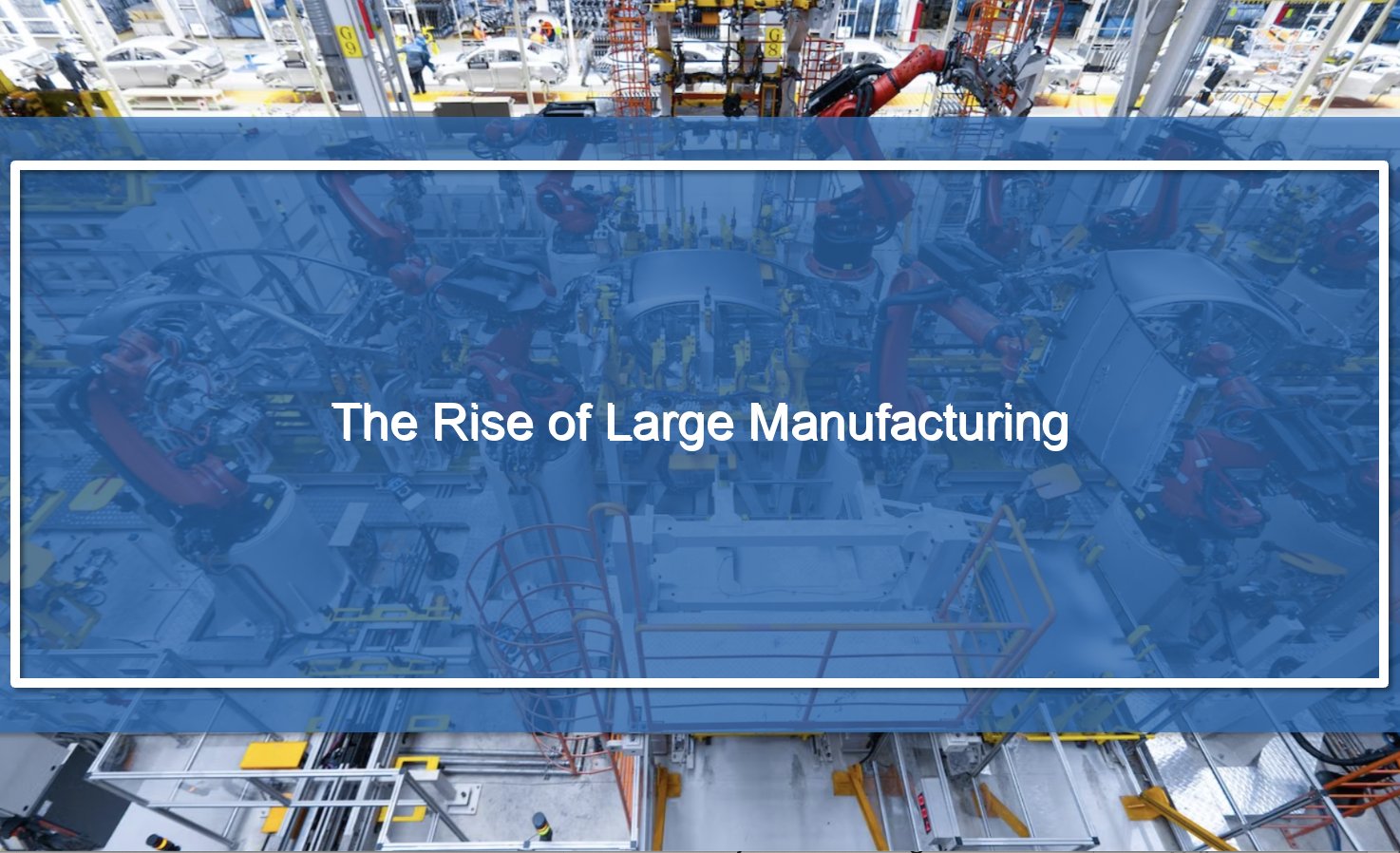Large manufacturing, also known as mass production, has revolutionized the industrial sector and significantly shaped the modern world. This article explores the concept of large manufacturing, its benefits, challenges, and its impact on various industries.
What is Large Manufacturing?
Contents
Large manufacturing refers to the production of goods on a large scale using standardized processes and machinery. It involves efficiently utilizing resources to produce a high volume of products at a lower cost per unit. This production method gained popularity during the Industrial Revolution and has become a cornerstone of modern manufacturing.
The Benefits of Large Manufacturing
Large manufacturing offers several advantages that have contributed to its widespread adoption across industries:
- Economies of Scale: Large-scale production allows companies to take advantage of economies of scale, resulting in lower production costs per unit. This cost advantage enables businesses to offer products at competitive prices, attracting a more extensive customer base.
- Innovation: Large manufacturing facilities often have dedicated research and development departments, fostering innovation and technological advancements. This leads to the creation of new products and improved manufacturing processes.
- Consistency and Quality: Standardized production processes in large manufacturing ensure consistent quality across products. This reliability builds trust among consumers and enhances brand reputation.
- Efficiency: Large manufacturing facilities are designed to optimize production processes, resulting in higher efficiency and productivity. Streamlined workflows, automation, and specialized machinery contribute to faster production cycles.
Challenges in Large Manufacturing
While large manufacturing offers numerous benefits, it also presents specific challenges that companies must address:
- Initial Investment: Setting up extensive manufacturing facilities requires significant capital investment. Companies need to allocate resources for infrastructure, machinery, and skilled labor.
- Supply Chain Management: Coordinating the supply chain in large manufacturing operations can be complex. Ensuring a steady flow of raw materials, managing inventory, and coordinating logistics are crucial for uninterrupted production.
- Flexibility: Large manufacturing facilities are optimized for producing a specific range of products. Adapting to changes in market demand or introducing new products may require reconfiguration or additional investments.
- Environmental Impact: Large-scale production can have a significant environmental footprint. Companies must implement sustainable practices and invest in technologies that minimize waste and reduce energy consumption.
Examples of Large Manufacturing
Large manufacturing is prevalent in various industries, including:
- Automotive: Automobile manufacturers utilize large-scale production to meet the global vehicle demand. Assembly lines and robotic systems enable the efficient production of thousands of cars daily.
- Consumer Electronics: Companies like Apple and Samsung employ extensive manufacturing facilities to produce smartphones, tablets, and other electronic devices. This enables them to meet the high demand for their products.
- Pharmaceuticals: Pharmaceutical companies rely on large-scale manufacturing to produce medications and vaccines. This ensures a steady supply of essential healthcare products to meet global needs.
- Fast-Moving Consumer Goods (FMCG): FMCG companies, such as Procter & Gamble and Unilever, utilize large manufacturing to produce everyday household products like soaps, detergents, and packaged foods.
The Impact of Large Manufacturing
The rise of large manufacturing has had a profound impact on various aspects of society:
- Employment: Large manufacturing facilities create job opportunities directly and indirectly. These facilities require a skilled workforce for production, maintenance, and management.
- Global Trade: Large manufacturing makes countries major exporters, contributing to economic growth and international trade. It allows businesses to compete in the global market by offering products at competitive prices.
- Standard of Living: Large-scale production has led to the availability of affordable products, improving the standard of living for many people. It has made essential goods more accessible to a broader population.
- Technological Advancements: Large manufacturing facilities drive technological advancements and innovation. The need for increased efficiency and productivity has led to the development of automation, robotics, and advanced manufacturing techniques.
Summary
Large manufacturing, or mass production, has revolutionized industries by enabling the production of goods on a large scale. It offers benefits such as economies of scale, innovation, consistency, and efficiency. However, it also presents challenges related to initial investment, supply chain management, flexibility, and environmental impact. Examples of large manufacturing can be found in the automotive, consumer electronics, pharmaceutical, and FMCG industries. The effect of large manufacturing includes job creation, global trade, improved standard of living, and technological advancements. As large manufacturing continues to evolve, it will shape the future of industries and contribute to economic growth.
